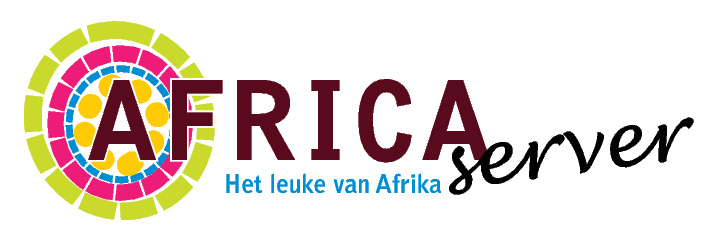Woensdag 26 Juni 2019

William Kentridge – Ten Drawings for Projection: Tentoonstelling rond belangrijke korte films van Kentridge
Zondag 02 Juni 2019 15:00
t/m Zondag 01 September 2019
Eye Filmmuseum toont William Kentridge – Ten Drawings for Projection (1989-2011), een serie waarmee Kentridge in de jaren negentig doorbrak in de internationale kunstwereld. In 2015 schonk hij de serie aan Eye. Het zijn korte filmwerken die bestaan uit houtskooltekeningen waarin Kentridge stukken toevoegt, uitwist en weer overtekent – vaak zonder dit proces te verhullen. De meeste films gaan net als veel van zijn muziektheaterwerk vergezeld van muziek van componist Philip Miller. Ze geven een wijde blik op het oeuvre van Kentridge en een kijkje in het leven in ZuidAfrika na de afschaffing van de apartheid. Ook onderdeel van de tentoonstelling is de recente, op vijf schermen geprojecteerde video-installatie
O Sentimental Machine. De tentoonstelling wordt begeleid door een programma van films, talks en events.
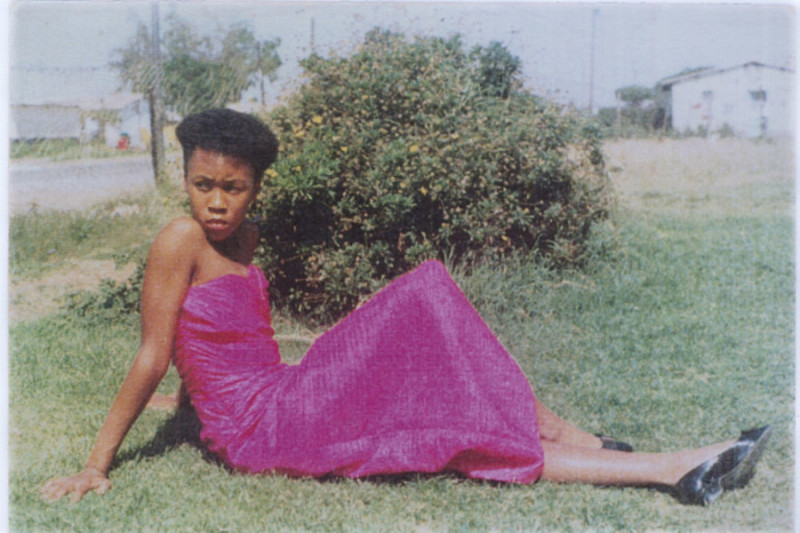
Welkom Today - Ad van Denderen, Lebohang Tlali en vele anderen
Tentoonstelling waarin uiteenlopende perspectieven, generaties en geschiedenissen met elkaar worden verweven. Van oude en nieuwe foto’s van Ad van Denderen, Lebohang Tlali en scholieren tot familiealbums, krantenarchieven en interviews door Margalith Kleijwegt. Bijzonder vervolg op veel geprezen fotoboek Welkom in Suid-Afrika uit 1991. Vanaf 18 mei is in het Stedelijk de tentoonstelling Welkom Today te zien van fotografen Ad van Denderen (1943, Nederland) en Lebohang Tlali (1978, Zuid-Afrika). Vijfentwintig jaar na de verkiezing van Nelson Mandela tot president, brengen Van Denderen en Tlali een kritisch vervolg op het veelgeprezen fotoboek Welkom in Suid-Afrika (1991) waarin Van Denderen de laatste dagen van apartheid in het goudmijnstadje Welkom vastlegde. Welkom Today combineert oude en nieuwe foto’s van Van Denderen en Tlali met foto’s gemaakt door scholieren, familiealbums, krantenarchieven en verhalen van schrijver Margalith Kleijwegt. Niet alleen Welkom is sinds de afschaffing van apartheid veranderd, maar ik ook. Ik kijk 27 jaar later met andere ogen naar die plek. In plaats van in te zoomen zoals ik toen deed, zoek ik nu naar minder confronterende en eenduidige beelden.
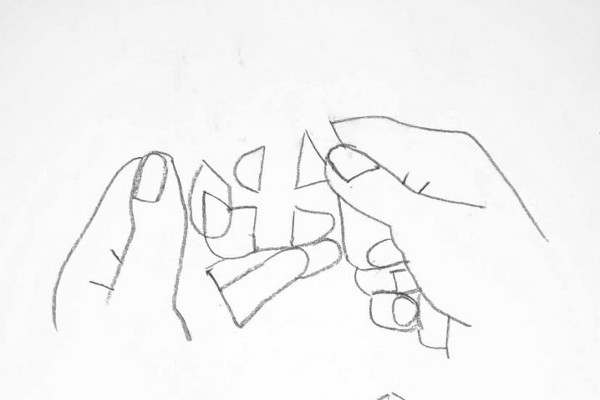
Easy Care Holiday Hair - with Dominique Zinkpe (Benin)
Curated by Koen Doodeman. Bundling hair relaxes as much as not bundling hair. However, there’s a difference between combing your fingers through loose hair and sliding them over a tight braid: whether you are inside the hair, surrounded by it, held in its atmosphere; or standing outside, cut off from it – the hair is an object. A matter of perception, a matter of style. It is the process of bundling loose hair and the way that you do it that gives a hairstyle its power. The ‘way that you do it’ is a core element in this show. Take as an example the three-strand braid: whilst intricate, it is very easy to do once you get the hang of it – you forget quickly that you are plaiting at all. The result can differ depending on the way in which you interweave the strands during the braiding process. A Dutch braid (vlecht), for example, is an inversion of the French (tresse); vlecht is above the hair instead of beneath as the French do it. But in both instances the length of hair dictates the duration of repetition, the hair directs the style. A perception of matter. Dominique Zinkpè (1969, BJ) is a painter and sculptor from Benin, Africa. His work is influenced by the country’s rich history and his immediate African surroundings. Many of Zinkpè’s sculptures consist of assemblages of carved wooden Ibeji dolls. These personages combine an animalistic and natural appearance with human characteristics. Zinkpè was awarded the Prix Jeune Talent Africa in 1993 and won the Prix Umeoa at the 2002 Dakar Biennale. The other exhibted artists are: Hadassah Emmerich (1974, NL) & Tobias Hantmann (1976, DE)
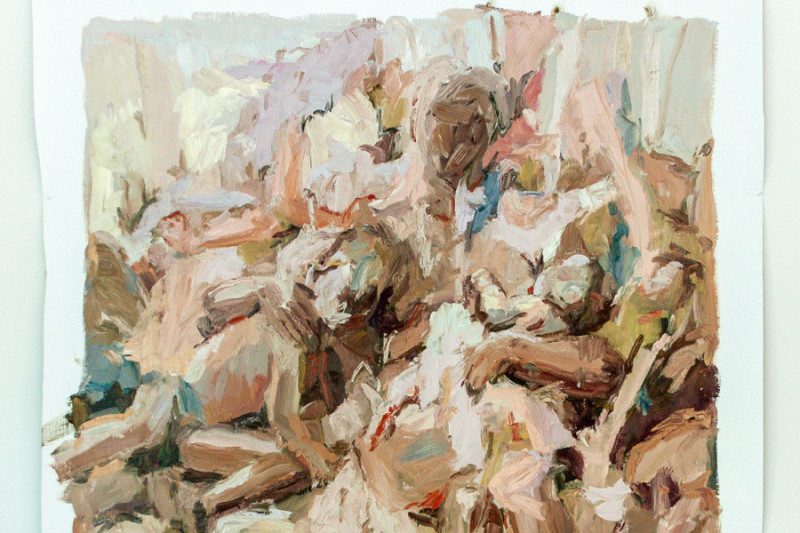
'Underbelly' by Mia Chaplin (South Africa) & GOLUBOY by Desiré van den Berg (NL)
Mia Chaplin is a painter who lives and works in Cape Town and the second artist-in-residence at the gallery’s permanent space in Bos en Lommer, where she has been working on her new presentation for the past month.
Working in oil on canvas and paper, her highly expressive works are characterised by their rich impasto surfaces and visible brushstrokes. Chaplin’s most recent works emphasise a muted colour palette of pink fleshy tones and golden highlights, consisting of still lifes, figure studies and landscapes. For ‘Underbelly’ Chaplin created paintings and sculptural objects, in which she explores the crooked, misshapen and imperfect nature of intimate relationships as they manifest in private environments. Chaplin is interested in gendered power structures and how identity is performed through societally-entrenched femininity. The fracturing of these intimate images suggests a feeling of disrepair or destruction. There is an attempt to garner control and autonomy, a holding together of something which keeps falling apart. ‘Underbelly’ is the urge to create a solid feeling, and the need to understand and own agency.
nomansart
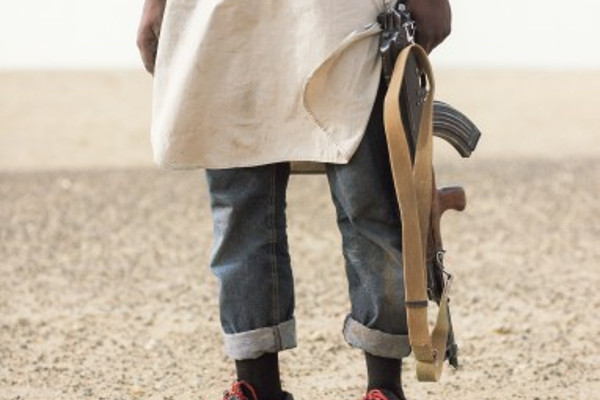
Philippe Dudouit - The Dynamics of Dust
'The Dynamics of Dust' is a long-term project by Philippe Dudouit (Switzerland, 1977), based on historical and geopolitical documentation, research and analysis. In this series, the photographer examines the new relationships that the nomadic indigenous inhabitants of the Sahelo-Saharan zone have established with a territory that is currently highly perilous. The project, which began in 2008, shows how a former tourist paradise has become a new theatre where human traffic is interlacing with terrorism, drugs and the weapons industry. At first glance, the rise of Islamic terrorism in this area is to blame, but a closer look reveals a reality that is much more complex. The area now faces a dangerous cocktail of underdevelopment, poverty and state failure. The new, transnational constellation of powers consists of armed islamists, human traffickers, drugs and weapon smugglers, topped off by international interests jockeying to win oil, gold and uranium mining rights. The lack of political vision for the area’s future, in combination with ongoing desertification due to climate change make up for a scenario in which a doomed generation is growing up.
